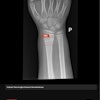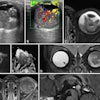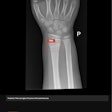
NEW YORK (Reuters Health), Jul 10 - Age-related white-matter changes can be significant predictors of poor poststroke survival, according to findings published in the July issue of the Journal of Neurology, Neurosurgery, and Psychiatry.
"Age-related white-matter changes (are associated) with functional decline, leading to loss of independence mainly due to decline in cognitive and motor functioning," Dr. Niku K. J. Oksala, of the University of Tampere, Finland, and colleagues write. White-matter changes are associated with the risk of recurrent stroke, they note. There are currently no data on the long-term predictive value of white-matter changes in stroke patients.
The researchers examined whether severe age-related white-matter changes are associated with shorter long-term survival and neurological causes of death. A total of 396 consecutive stroke patients from the Helsinki Stroke Aging Memory cohort who underwent MRI were included in the study. The patients were followed for up to 12 years (mean, 7.5 years).
Overall, 28% of subjects had mild, 18% had moderate, and 54% had severe age-related white-matter changes. The results of Kaplan-Meier analysis demonstrated that poor survival was predicted by severe age-related white-matter changes, cardiac failure, atrial fibrillation (p < 0.0001 for all), other arrhythmias (p = 0.003), peripheral arterial disease (p = 0.004), and poor modified Rankin score (p < 0.0001).
In multivariate Cox regression analysis, independent associations were found between severe age-related white matter, advanced age, cardiac failure, atrial fibrillation, peripheral arterial disease, smoking, diabetes, poor modified Rankin score, and poor long-term survival. Severe age-related white-matter changes were associated with brain-related causes of death (p = 0.001), especially due to infarction (p < 0.0001).
"Following on from these findings, in multivariate Cox regression analysis using brain-associated causes of death as the end point, severe age-related white-matter changes remained as a predictor of poor survival (HR 1.80; p = 0.019)," Oksala and colleagues comment.
Additional predictors were advanced age, atrial fibrillation, peripheral arterial disease, and poor Rankin score.
J Neurol Neurosurg Psychiatry 2009;80:762-766.
Last Updated: 2009-07-08 16:15:47 -0400 (Reuters Health)
Related Reading
Treadmill use activates brain circuits to improve walking after stroke, December 8, 2008
Copyright © 2009 Reuters Limited. All rights reserved. Republication or redistribution of Reuters content, including by framing or similar means, is expressly prohibited without the prior written consent of Reuters. Reuters shall not be liable for any errors or delays in the content, or for any actions taken in reliance thereon. Reuters and the Reuters sphere logo are registered trademarks and trademarks of the Reuters group of companies around the world.


















